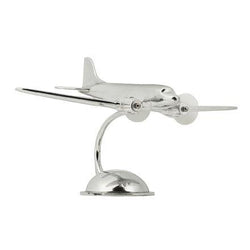What do you remember about how to communicate with Air Traffic Control (ATC) if you have a radio equipment failure and lose comms or need to fly an aircraft without a radio? We all learned about light gun signals as student pilots, but we seldom quiz ourselves to check our retention.
Let’s face it, if you had a real-world radio failure tomorrow and the tower was trying to communicate with you by flashing a light gun your way, would you know what they were trying to say or how to respond?
If not, the good news is, you aren’t alone, and it’s easy to fix the problem. Step 1 is to set ourselves up for no radio (NORDO) success by flying with an easily accessible light gun signal cheat sheet like the one printed on this deluxe VFR pilot kneeboard. Step 2 is a quick refresher on what light gun signals are, what they mean, and how to respond.
Ready? Let’s get started.

What Are Light Gun Signals?
The FAA Pilot/Controller Glossary describes light guns as “A handheld directional light signaling device which emits a brilliant narrow beam of white, green, or red light as selected" by the air traffic controllers
The glossary goes on to explain that “the color and type of light transmitted can be used to approve or disapprove anticipated pilot actions where radio communication is not available.”
The light gun signals produced by the light gun are used “for controlling traffic operating in the vicinity of the airport and on the airport movement area.”
Keep in mind that ATC Light gun signals can be difficult to see during the daytime, keep a careful look out towards the tower.
 What Do Light Gun Signals Mean?
What Do Light Gun Signals Mean?
The light signals from a light gun mean different things depending on the color, whether the light is solid or flashing, and whether the plane receiving the signal is in the air or on the ground. All light gun signals tell a pilot to either take or not take each type of action.
Keep reading for a quick refresher on the meaning of light gun signals for both ground-based and airborne planes.
 Light Gun Signals for Aircraft on the Ground
Light Gun Signals for Aircraft on the Ground
Planes on the ground can receive any one of six different light gun signals. The signals and their corresponding meanings are:
• Steady Green
Aircraft is cleared for takeoff. A steady green light means that the runway in front of you is free of traffic and you may take off.
• Flashing Green Light
Flashing green means you are cleared for taxi. Once you receive a flashing green light, you are cleared to taxi. Remember to hold for takeoff until you receive a steady green light.
• Steady Red
Stop. A steady red light gun signal is telling you to stop, hold your position and wait for further instructions.
• Flashing Red Light
Taxi clear of runway in use. A flashing red signal light is typically used to advise pilots who have just landed to take the nearest possible taxiway and taxi clear of the active runway for other incoming traffic.
• Flashing White Light
A flashing white light signals to return to your starting point at the airport. A flashing white light can be used when the airfield is currently too busy to support no radio (NORDO) operations, and the air traffic controllers needs you to return to your starting point and park until traffic slows down and they can fit you in.
• Alternating Red and Green Flashes
Exercise extreme caution. The FAA has advised that Air Traffic Controllers sending the alternating red and green signal means to exercise extreme caution due to:
- Aircraft are converging and a collision hazard exists.
- Mechanical trouble exists of which the pilot might not be aware.
- Other hazardous conditions are present which call for intensified pilot or operator alertness. These conditions may include runway obstructions, soft field, ice on the runway, etc.
- The Federal Aviation Administration brief also notes: “The warning signal is not a prohibitive signal and can be followed by any other light signal, as circumstances permit.”
 Light Gun Signals for Aircraft in Flight
Light Gun Signals for Aircraft in Flight
Planes in the air can receive any one of five different light gun signals. The signals and their corresponding meanings are:
• Steady Green
Cleared to land. Once you receive a steady green light, this counts as a clearance to land. The controller is indicating the runway will be unoccupied and you are authorized to land on it.
• Flashing Green Light
Flashing green signals to return for landing. If you receive a flashing green light when approaching the airfield, the controller is instructing you to do a go-around because you are not yet cleared to land but should be cleared shortly. Remain in the pattern and watch for the flashing green to transition to a steady green light that clears you to land.
• Steady Red Light
Give way to other aircraft and continue circling. Typically, an aircraft without radio communications will be allowed to land as soon as possible, but there may be a situation where another aircraft needs to come in first on the same active runway and you will need to give way to that aircraft.
A steady red light means that when you approach the runway, locate the other involved aircraft and remain clear. Allow them to land first while you circle and wait for the steady green light.
• Flashing Red Signal
Airport unsafe, do not land. A flashing red light is a catch-all way for a controller to indicate to an incoming NORDO pilot that some form of hazard on the runway or at the airport is making it unsafe for you to land.
As the pilot in command, you can go around, try lining up for another runway, or choose to divert to another airport. Depending on your situation, you may need to visually assess the situation and then land anyway in the case of a dire emergency.
• Flashing White Light
The flashing white light is not used to signal aircraft in flight.
• Alternating Red and Green Flashes
Exercise extreme caution. The alternating red and green general warning signal has the same meaning in the air as it does for aircraft on the ground and requires the pilot in command to exercise extreme caution due to situations such as possible runway obstructions. Check the description for this above under the alternating red and green signal section.
 How to Respond to Light Gun Signals from ATC
How to Respond to Light Gun Signals from ATC
You’ve received and understood the light signal message from the Air Traffic Controller. Now what? How do you signal your response if you're experiencing radio failure can can't establish radio contact with the tower? Just like the predetermined light signal codes, the FAA has developed a standardized aircraft response that involves rocking the wings or blinking the navigation lights.
- In air during the day: Airplanes flying during the day should acknowledge the signals by moving the ailerons and rudders to rock the wings.
- On the ground during the day: Pilots on the ground during daylight hours should also acknowledge by moving the ailerons and rudders so the controller will see the control surfaces moving in response to the light signals.
- On the ground at night: light gun signal warnings should be acknowledged by flashing landing or navigation lights off and on twice.
- In the air at night: the same as on the ground, the pilot should acknowledge by flashing landing or navigation lights off and on twice.
Takeaway
As the pilot in command it is important for you to memorize light gun signal warnings that are provided by the control tower. Writing them down on a kneeboard pad or keeping an infographic saved on your iPad can also be helpful in the event you end up in a situation where you need to communicate with an air traffic controller after going through radio equipment failure. The Federal Aviation Administration has these guidelines for light gun signals in place in order to help aviation remain as safe and efficient as possible.
Fly safe!
Want to refresh yourself on other signs and signals?
Here are some articles we think you’ll find useful:
- Airport Runway Lights: Spacing and Colors (All the Details)
- How to Read Airport Signs (Everything You Need to Know)
- How to Improve ATC Communication (Guide)
Have you ever needed to rely on light gun signals during a takeoff or landing? We’d love to hear about it! Share your story in the comments below.







